Many cat owners struggle with a common problem: their cats don't drink enough water. This reluctance stems from evolutionary instincts—cats are descendants of desert-dwelling ancestors who derived moisture from prey, not stagnant water. Left unaddressed, chronic dehydration can lead to severe health risks like kidney disease and urinary blockages. Enter cat water fountains, innovative devices designed to entice cats with fresh, flowing water. But do they truly work? Let’s dive into the science and benefits.
Why Cats Need Plenty of Water
Desert Ancestors and Low Thirst Drive
Cats evolved from desert-dwelling ancestors and naturally have a low thirst drive. Unlike dogs, they don't feel the urge to drink water frequently, even when they actually need it. This means many cats are chronically dehydrated without showing obvious symptoms.
The Role of Water in Feline Health
Water supports nearly every bodily function in cats. It helps flush toxins from the kidneys, maintains urinary tract health, supports digestion, and helps regulate body temperature. Ensuring consistent water intake is essential for long-term health.
Signs and Risks of Dehydration
Common signs of dehydration in cats include dry gums, lethargy, poor appetite, and dark yellow urine. Left unaddressed, chronic dehydration can lead to urinary tract infections, bladder stones, or even kidney failure. A cat drinking fountain encourages regular hydration, helping to prevent these issues.

Limitations of Traditional Water Bowls
Dirty Water Breeds Bacteria
Still water in open bowls collects dust, fur, and bacteria quickly. If not cleaned multiple times a day, it becomes unappealing and even unsafe for pets to drink.
Less Appealing to Cats
Cats are naturally drawn to movement. Static water doesn’t grab their attention, so they may ignore it altogether. A fountain for cats creates motion that feels more like a natural stream.
Whisker Fatigue
Some bowls are too deep or narrow, causing a cat’s sensitive whiskers to touch the sides. This can create discomfort and deter them from drinking enough water. Many pet water fountain designs help avoid this by using wider, shallow trays.

What Is the Appeal of a Cat Water Fountain?
Simulates a Natural Water Source
A cat fountain mimics streams and rivers—natural water sources that cats instinctively trust. The gentle, continuous flow signals freshness and safety.
Stimulates Curiosity
The sound and motion of flowing water can awaken a cat’s natural curiosity. Many owners report their cats being instantly drawn to the bubbling or trickling of a pet fountain.
Built-in Filtration Systems
Most modern cat water fountains include a filtration system, typically made of activated carbon, ion exchange resin, or foam. This helps trap hair, debris, and impurities, providing cleaner, better-tasting water.

Cat Water Fountain Benefits for Cats
Encourages Hydration
Cats tend to drink more from cat drinking fountains due to the fresh, moving water. Increased hydration supports overall wellness and reduces health risks.
Prevents Urinary Tract Problems
Hydration helps dilute the urine, lowering the concentration of minerals that cause bladder stones or urinary infections. Cat fountains are often recommended by vets for this reason.
Promotes Kidney Health
Healthy kidneys rely on adequate water intake to filter waste from the bloodstream. Over time, encouraging your cat to drink more water can reduce the risk of kidney issues.
Aids Digestion
Water plays a role in breaking down food and absorbing nutrients. It also helps prevent constipation, a common issue in indoor cats.
Fresh, Filtered Water at All Times
Whether you choose a ceramic, plastic, or stainless steel cat water fountain, most are equipped with a cat water fountain filter to maintain freshness. This ensures your cat always has access to clean water, even when you're not home to refill it.

Choosing the Right Fountain: A Buyer’s Guide
Material Matters
- Stainless Steel: Durable, hygienic, and resistant to scratches. Ideal for cats with allergies or acne.
- Ceramic: Heavy and stable but prone to chipping.
- BPA-Free Plastic: More budget friendly but less pet-friendly than the 2 choices above
Filter Efficiency
Prioritize fountains with replaceable cat water fountain filters. Look for more than 2 layers of filtration system models that could remove contaminants.
Noise & Energy Use
- Quiet Pumps: Look for sub-40 dB motors for noise-sensitive cats.
- Low Voltage: Energy-efficient pumps (1.5–2.5W) save electricity.
Capacity & Design
- Single-Cat Homes: 1–1.5L reservoirs.
- Multi-Cat Households: 2–3L tanks with multiple drinking zones.
- Design: Wide basins prevent whisker stress; ramps or flower-shaped streams cater to different drinking styles.
Wireless, Pumpless, or App-controlled
- Wireless (Battery-Powered): Ideal for travel or cord-free setups, but requires frequent recharging.
- Pumpless (No Traditional Submerged Pump): Without an internal pump, these fountains are much easier to clean and maintain. They're perfect for pet owners seeking a modern, low-maintenance solution, especially if your cat tends to make their drinking area messy.
- App-Controlled: Remote monitoring, usage tracking, and customizable flow via smartphone (requires Wi-Fi).
Addressing Common Concerns
- Cost: While fountains are a bit more expensive than traditional bowls, they reduce long-term vet bills from preventable diseases.
- Maintenance: Daily water refreshes and weekly cleanings prevent slime. Use vinegar for descaling.
- Transition Tips: Place the fountain away from food/litter. Add ice cubes to spark interest, or use a pheromone spray to reduce anxiety.
Conclusion
Cat water fountains are not a luxury—they’re a vital tool for modern cat care. By meeting basic instincts and providing clean water, they improve hydration, prevent serious diseases, and enhance quality of life. Whether you choose a stainless steel cat water fountain for durability or a quiet ceramic model for nervous kitties, the key is consistency: clean regularly, replace filters, and monitor your cat’s intake. Pair this with wet food, and you’ll give your feline the hydration support they need to thrive.














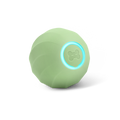


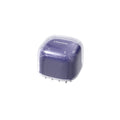
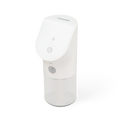
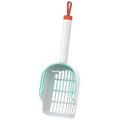


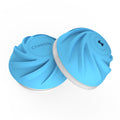
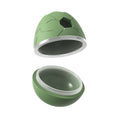
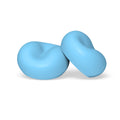


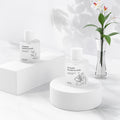






Leave a comment
All comments are moderated before being published.
This site is protected by hCaptcha and the hCaptcha Privacy Policy and Terms of Service apply.